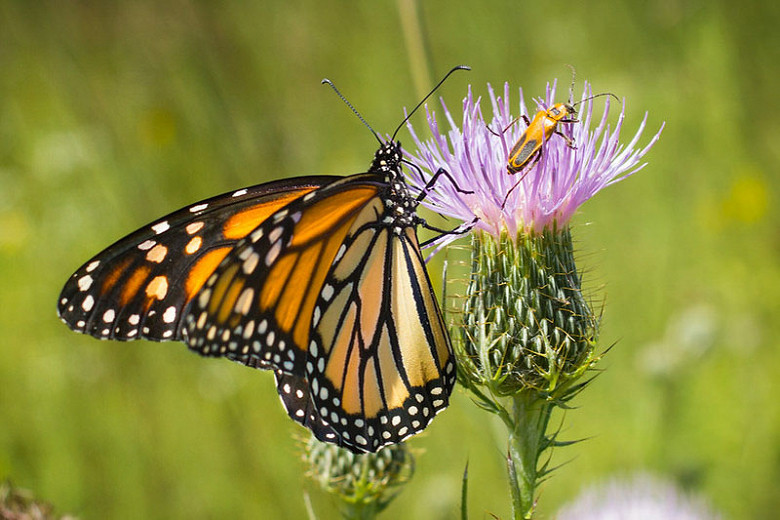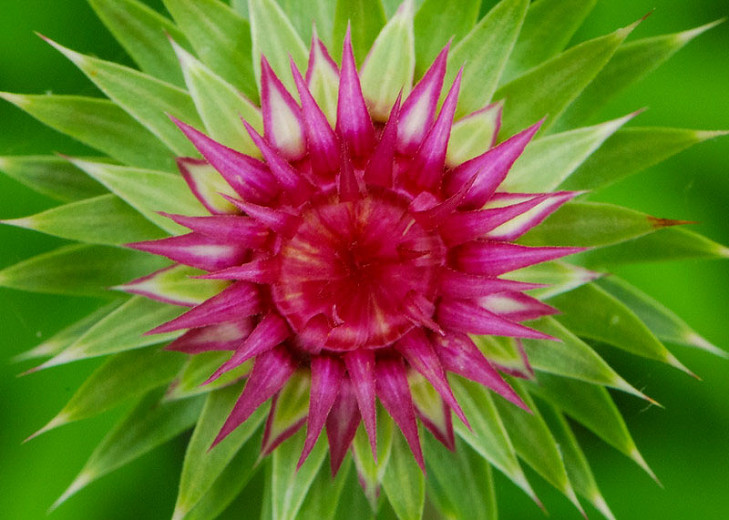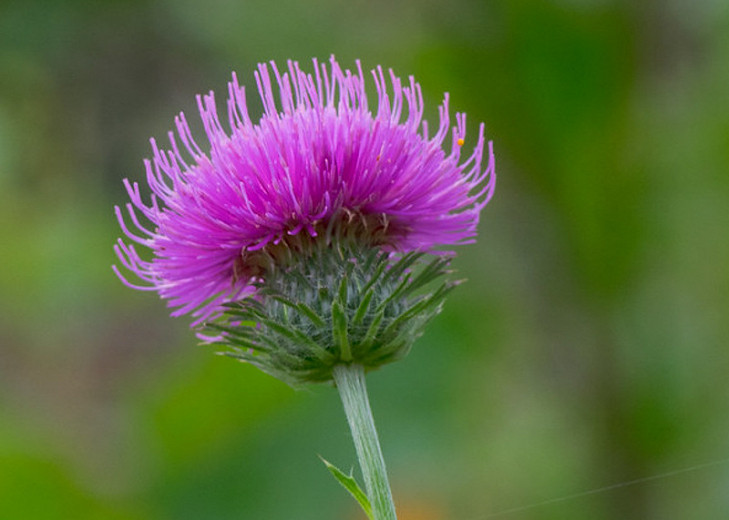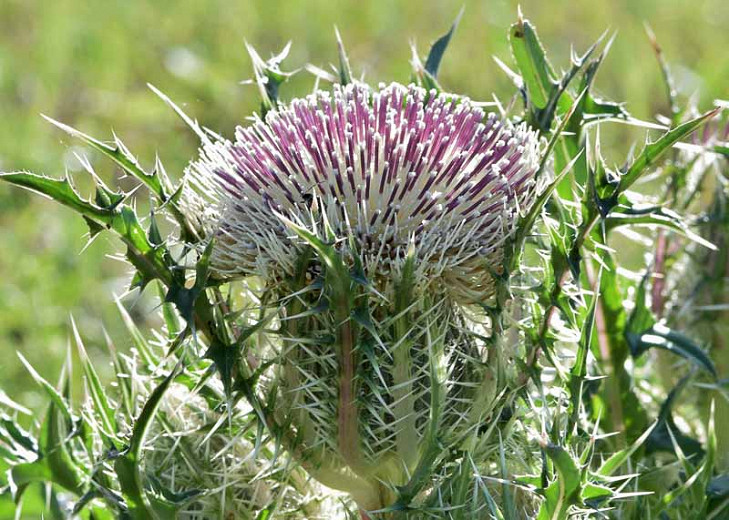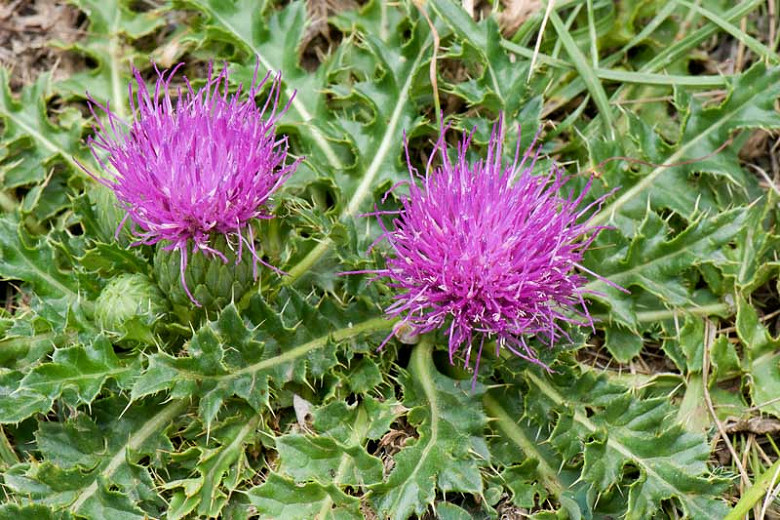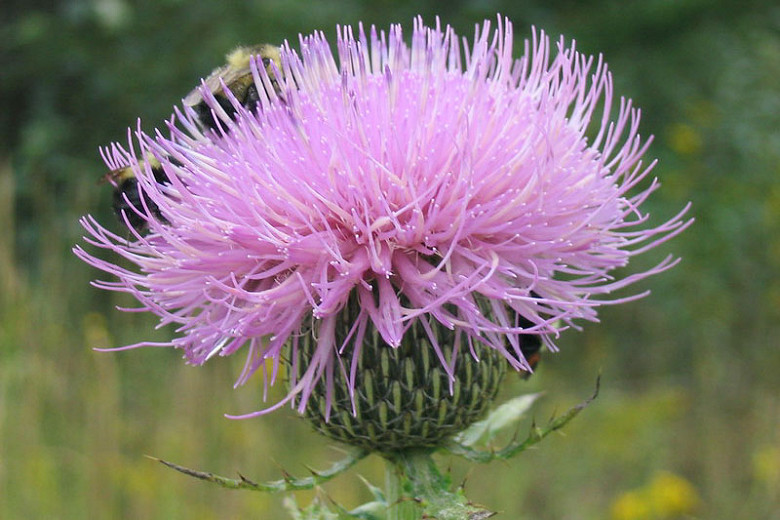Cirsium discolor (Field Thistle)
Cirsium discolor (Field Thistle) is a tall biennial or short-lived perennial producing a basal rosette in the first year and flowers in the second year. Its upright stem is usually hairy and branched on the upper third. It is clad with alternate leaves with deep spine-tipped lobes and downy white undersides. In early summer to fall, the plant boasts lavender pink pincushion-like flower heads, 2 in. across (5 cm), packed with over 100 disc flowers. Blooming for about a month, they produce copious nectar and are visited by numerous bees, beetles and butterflies. The blossoms give way to seeds with long downy plumes that facilitate dispersal by the wind. Finches, small mammals and insects eat the seeds. Found in meadows, wood edges and openings, field borders, abandoned fields, pastures and roadsides in the eastern half of the U.S. and Canada, Field Thistle has a central taproot and does not spread by rhizomes. It is not invasive or as difficult to control as non-native thistles.
- Grows up to 30-80 in. tall (75-180 cm) and 12-24 in. wide (30-60 cm). Field Thistle will die after flowering, but will readily self seed in the garden.
- Thrives in full sun to partial shade and average to dry soil moisture. Plants have a deep root system and should not require supplemental water once established.
- Lovely in beds and borders, cottage gardens, naturalized areas and prairies and meadows. It is best to plant Field Thistle in an area where competing vegetation has been removed. Good as cut flowers too!
- No serious pest or disease issues. Keep an eye out for bud weevil and crown weevil. Grazing animals will avoid grazing the immediate area around thistles.
- Propagate by seed in late fall to early spring.
- Native to much of the eastern half of the U.S. and Canada.
Requirements
| Hardiness | 3 – 9 |
|---|---|
| Plant Type | Perennials |
| Plant Family | Cirsium – Thistles |
| Exposure | Full Sun, Partial Sun |
| Season of Interest | Summer (Early,Mid,Late)Fall |
| Height | 2' – 6' (60cm – 180cm) |
| Spread | 1' – 2' (30cm – 60cm) |
| Spacing | 18″ – 24″ (45cm – 60cm) |
| Water Needs | Low |
| Maintenance | Low |
| Soil Type | Clay, Loam |
| Soil pH | Acid, Alkaline, Neutral |
| Soil Drainage | Well-Drained |
| Characteristics | Cut Flowers, Showy |
| Native Plants | United States, Midwest, Illinois, Indiana, Iowa, Michigan, Minnesota, Missouri, North Dakota, Ohio, South Dakota, Wisconsin, Northeast, Connecticut, Delaware, Maine, Massachusetts, Maryland, New Hampshire, New Jersey, New York, Pennsylvania, Rhode Island, Vermont, Southeast, Alabama, Arkansas, Georgia, Kentucky, Louisiana, Mississippi, North Carolina, South Carolina, Tennessee, Virginia, West Virginia |
| Tolerance | Deer |
| Attracts | Bees, Birds, Butterflies |
| Garden Uses | Beds and Borders |
| Garden Styles | Informal and Cottage, Prairie and Meadow |
